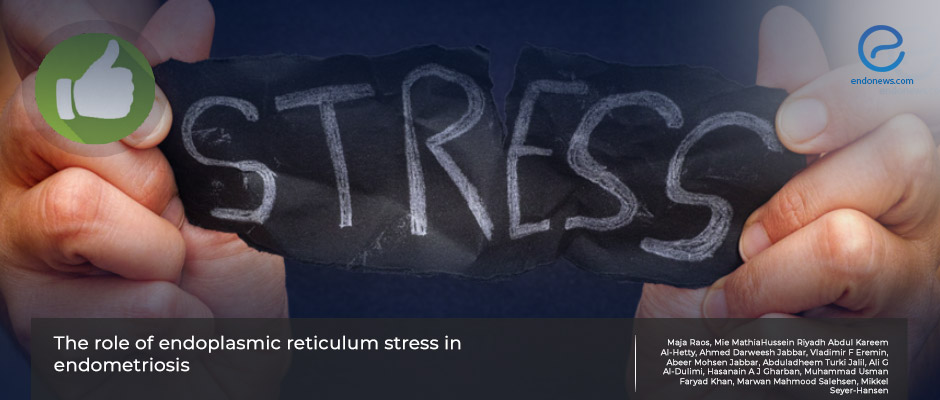This time it is good to have this stress: Endoplasmic reticulum stress and endometriosis.
Mar 21, 2023
New suggestions for treatment comes from the cellular level.
Key Points
Highlights:
- An organelle inside the cell called the endoplasmic reticulum produces proteins when exposed to stress which leads to endometriosis lesion destruction.
Importance:
- The review summarizes the science underlying endoplasmic reticulum stress mechanisms and suggests possible therapeutic options.
What's done here:
- The literature about the endoplasmic reticulum, its working mechanisms, and proteins produced in relation to stress which would cause apoptosis of the cells have been described.
Key Results:
- The endoplasmic reticulum (ER) is an organelle where transmembrane proteins are modified and destructed if there is a mis-synthesis.
- When those proteins are misfolded, they accumulate in the ER lumen. This accumulation triggers cascades that would cause a correction or if unable, cell apoptosis.
- Those factors that cause accumulation are increased protein synthesis demands, oxidative stress, and reduced calcium (Ca2+) levels.
- It is well known that mTOR receptors that trigger apoptosis with progesterone help are deficient in endometriotic cells.
- The ER stress inducers have been shown to cause endometriosis cell reductions while estradiol exposure has reduced ER stress.
- It is found that in normal endometrial cells, tunicamycin (ER stress inducer) increased GRP78 (ER stress marker), which was supported by all types of progesterone in normal endometriotic cells but only dienogest increased ER stress in endometriotic cells.
- Naringenin, a flavanone compound, inhibited proliferation and promoted apoptosis by inducing ER stress.
- The agents to induce ER stress are suggested to target endometriosis from all perspectives.
Limitations:
- The in vitro studies are promising for inducing ER stress and endometriotic cell death, but clinical studies are warranted.
Lay Summary
Endometriosis is a hormone-based inflammatory disease. Cell-level therapeutic options are very popular when resistance to cell death capacity of endometriotic cells is on the table.
In the review conducted by Hussein Riyadh Abdul Kareem Al‑Hetty et al, the authors summarized the effects of endoplasmic reticulum stress on endometriotic cell death.
The endoplasmic reticulum is an organelle where transmembrane proteins are modified and destructed if there is a mis-synthesis. When there is a misfolding of those proteins then they accumulate in the endoplasmic reticulum lumen. This accumulation triggers cascades that would cause a correction or if unable to do it, the cell undergoes apoptosis. Those factors causing accumulation are increased protein synthesis demands, oxidative stress, and reduced calcium (Ca2+) levels.
It is well known that mTOR receptors that trigger apoptosis with the help of progesterone are deficient in endometriotic cells. The endoplasmic reticulum stress inducers have been shown to cause endometriosis cell reductions while estradiol exposure has reduced the endoplasmic reticulum stress.
It is found that in normal endometrial cells, an endoplasmic reticulum inducer called tunicamycin increased GRP78, which is an endoplasmic reticulum stress marker, that was later supported by all types of progesterone in normal endometriotic cells. Dienogest increased ER stress in endometriotic cells. Naringenin, a flavanone compound, inhibited proliferation and promoted apoptosis by again inducing endoplasmic reticulum stress.
The agents to induce endoplasmic reticulum stress are suggested to target endometriosis from all perspectives. While the in vitro studies seem promising to stop endometriosis clinical studies must be conducted to be sure about the systemic effects. This review article was recently published in the scientific journal named 'Cell Stress Chaperone'.
Research Source: https://pubmed.ncbi.nlm.nih.gov/36696012/
ER stress endometriosis apoptosis

